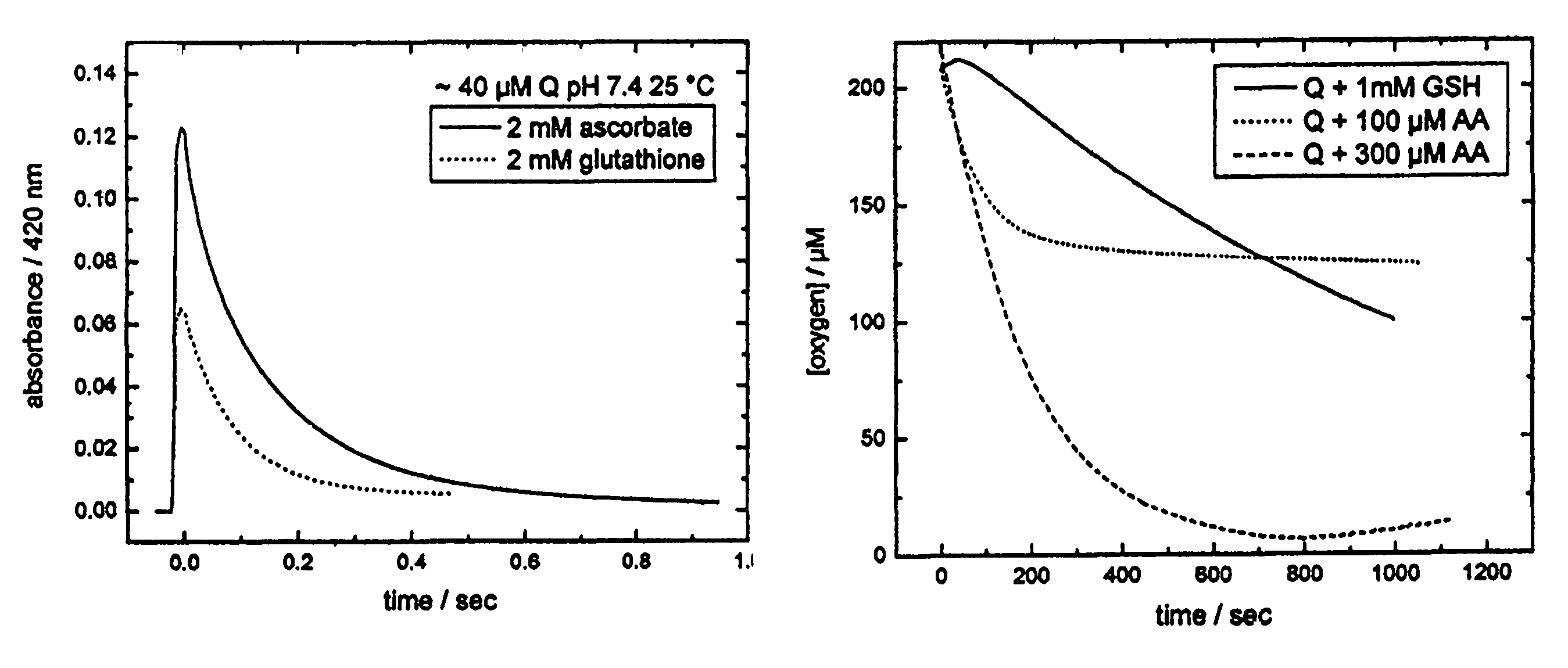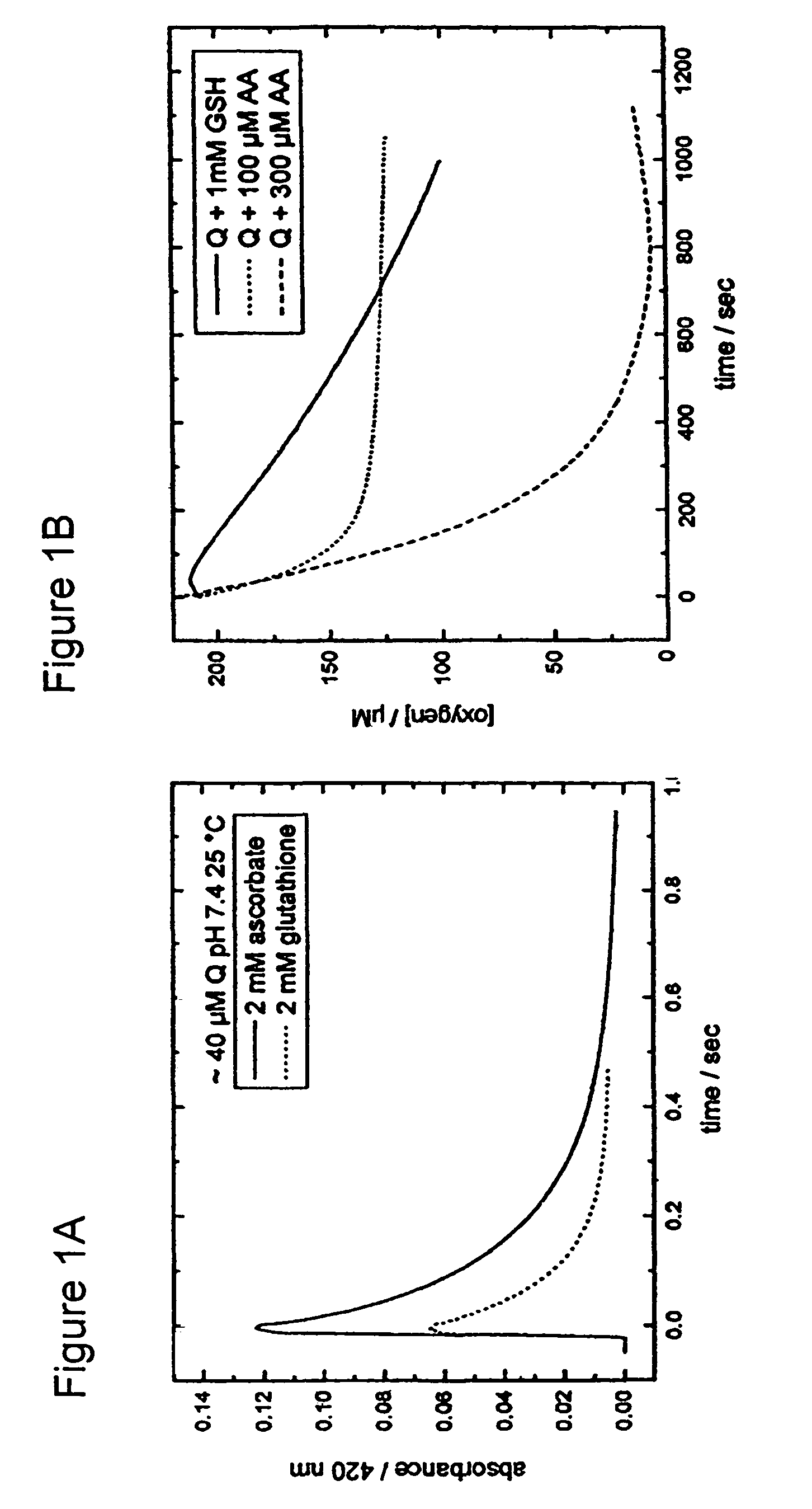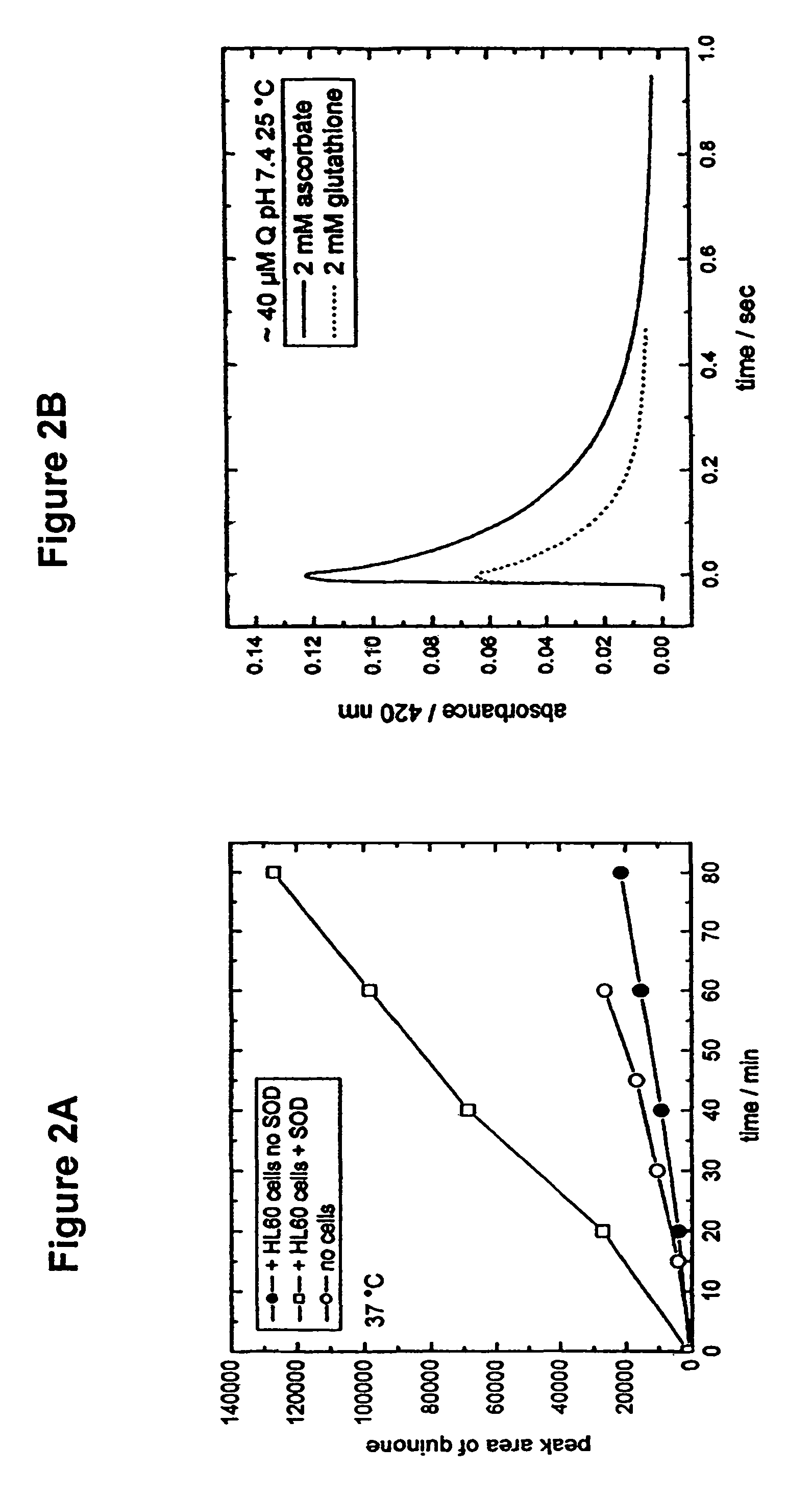Compositions and methods with enhanced therapeutic activity
- Summary
- Abstract
- Description
- Claims
- Application Information
AI Technical Summary
Benefits of technology
Problems solved by technology
Method used
Image
Examples
example 1
Synthesis of Novel Quinones
[0159]a) Synthesis of CA-1 Ortho-Quinone, 4
[0160]The ortho-quinone of CA1 was synthesized from CA4 using the mild oxidant iodoxybenzoic acid.
[0161]To a solution of Combretastatin A-4 (0.032 g, 0.100 mmol; OXiGENE, Inc.) was added Iodoxybenzoic acid (0.028 g, 0.099 mmol) in D7 DMF (4 ml) with stirring by vortex for ½ hr. Completion of the reaction was indicated by the disappearance of the initial yellowish slurry and the appearance of a clear solution of a deep red color. 1H-NMR was performed immediately as the quinone product was highly unstable and degraded within a ½ hr following the initiation of the reaction, as indicated by TLC and NMR.
[0162]4, 1H NMR: in D7DMF δ (PPM) 7.27 (d, 1H, J=12.0 Hz, Ph-H), 7.01 (d, 1H, J=10.1 Hz, bridge-H), 6.93 (s, 2H, Ar—H), 6.80 (d, 1H, J=12.0 Hz, —H), 6.38 (dd, 1H, J=10.1 Hz, 1.6 Hz, bridge-H), 4.03 (s, 6H, —OCH3), 3.96 (s, 3H, —OCH3), 3.55 (s, 3H, —OCH3).
[0163]b) Synthesis of CA-1 Para-Quinone, 5
[0164]The Para quinone o...
example 2
Synthesis of Novel Catechols
[0174]The following catechol compounds were prepared synthetically by a Wittig reaction between an appropriately substituted aldehyde and an appropriately substituted phosphorous ylide. The aldehyde portion and ylide portion can be readily switched as well to allow for the judicious incorporation of the requisite functional groups within the target stilbenes (see Scheme 1 and 2 for general synthetic protocols).
[0175]
[0176]
General Methods:
[0177]LC / MS: LCMS analyses were run on an Micromass Single Quadrupole LCMS system comprising an Agilent HP-1100 LC with a Hypersil BDS C18 (5μ) reverse phase column (2.1×50 mm) run with a flow rate of 1.00 mL / min. The mobile phase used solvent A (H2O / 0.1% TFA) and solvent B (CH3CN / 0.1% TFA) with a 2.1 min gradient from 0% to 95% CH3CN. The gradient was followed by a 0.2 min return to 0% CH3CN and a 0.1 min flush. The peaks of interest eluted on the LC profiles at the times indicated.
[0178]Proton NMR: unless otherwise indi...
example 3
Diphosphate Prodrugs
[0327]CA1P prodrug is activated when phosphate moieties are removed from the molecule by phosphatases that are ubiquitous in mammalian blood and tissue. Dephosporylation of the drug produces an ortho-catechol that is able to bind tubulin associated with vascular endothelia and interfere with the flow of blood to tumor regions. The ortho-catechol is highly unstable and is capable of autooxidizing to form a semiquinone and quinone moiety, both of which are known to produce highly reactive oxygen species (ROS) that are highly cytotoxic to tumor cells by virtue of their damaging effects on tumor cell membranes, lipid peroxidation, DNA damage, and depolymerization of macromolecules. In addition, the quinone species of the This second cytotoxic activity increases the molecules ability to kill tumor cells. Therefore, phosphorylation is thought to stabilize the highly unstable catechol and quinone, and delay their formation until the prodrug is administered to a patient....
PUM
| Property | Measurement | Unit |
|---|---|---|
| Composition | aaaaa | aaaaa |
Abstract
Description
Claims
Application Information
 Login to View More
Login to View More - R&D
- Intellectual Property
- Life Sciences
- Materials
- Tech Scout
- Unparalleled Data Quality
- Higher Quality Content
- 60% Fewer Hallucinations
Browse by: Latest US Patents, China's latest patents, Technical Efficacy Thesaurus, Application Domain, Technology Topic, Popular Technical Reports.
© 2025 PatSnap. All rights reserved.Legal|Privacy policy|Modern Slavery Act Transparency Statement|Sitemap|About US| Contact US: help@patsnap.com



